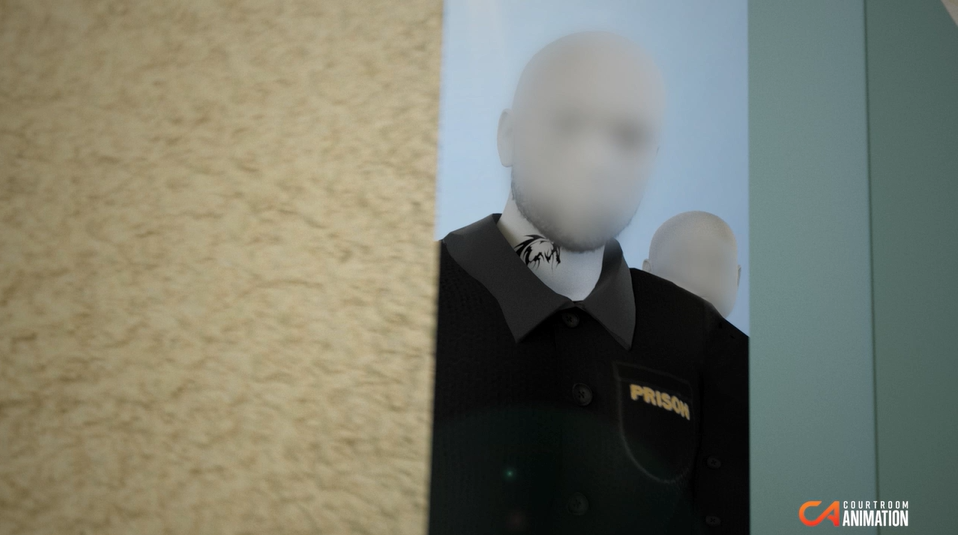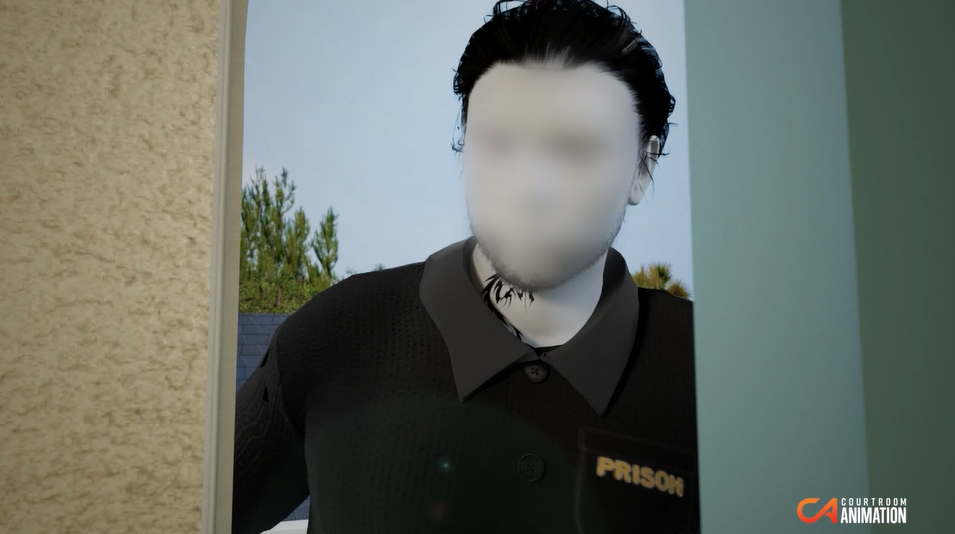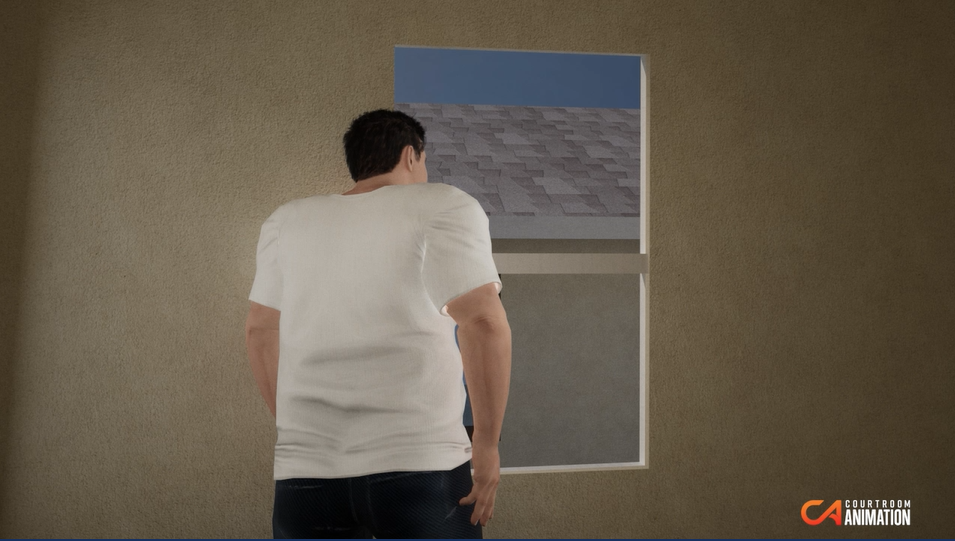Interview of Patrick Carey by Courtroom Animation’s CEO & Founder, Brady Held.
Summary:
In May of 2011, a man was unfortunately killed in his apartment complex in San Pedro. His next-door neighbor, a woman who became the key witness for the prosecutors in this case, claimed she saw the two suspects after they erroneously knocked on her door. A secondary witness claimed he saw the two suspects as they jumped a nearby fence and ran past his window after the murder.
The defendant, one of the previously perceived suspects, had been charged with special circumstance murder. The prosecutor’s theory was that a woman paid the defendant and his brother to murder her ex-husband for a life insurance payout. It was a circumstantial case, with the defendant being a “logical” suspect based on the female neighbor’s testimony.
In this criminal case, a prior hung jury left the defendant incarcerated for seven years. With the prosecution seeking a retrial, Courtroom Animation was retained by Patrick Carey, the defense attorney, to create a trial animation which featured the witness perspectives of the two suspected individuals. After eleven years of litigation, the jury announced a not-guilty verdict in 2022!
“It’s very rare that a criminal defense attorney gets a cold not guilty on a murder case, especially a special circumstance murder case. The animation was a huge part of that result. Everything [about the visual] was up to par, and any changes that I needed got done. Courtroom Animation met every deadline and more.”
– Patrick Carey, Defense Attorney & Founder of the Law Offices of J. Patrick Carey
Challenge:
One of the bigger issues with this case was the time period of the trial. The defendant was in jail for seven years, and the defense counsel needed to acquire transcripts for previous proceedings. Motions needed to get filed, and there were attorneys that were on the first trial that weren’t on the second retrial. The defense was on a tight deadline, and wanted something to elevate the case’s strength and clear up any confusing details.
A key issue was that the prosecutor’s case relied solely on circumstantial evidence. They had leaned into the first witness’s testimony, the female neighbor, to make the arrest. The defense’s argument was that the first witness had mistakenly identified the defendant, as her testimony was inconsistent with the second witness’ testimony.


Physical differences were visualized from the witnesses’ claims in the trial animation.
For example, the first witness had differing physical claims on what the murders looked like, such as neck tattoos, hair, height, weight, and where they were standing.
The defense made the argument that the first witness was not identifying one of the people she saw that day, but simply the person she was seeing in court – his client. The defense counsel knew one method to discredit her would be by visualizing how her testimony was inconsistent, as the evidence showed she couldn’t fully see the second man to properly identify him as she attempted to do. But explaining these facts to a jury proved to be complex!
Solution: Visualize the Witness’ Inconsistencies
Going into the second trial, the defense wanted a full acquittal and to finally release their client from imprisonment. That’s when the defense counsel sought out a trial animation for the case – something to simplify the facts by clearly visualizing for the jury what was possible based on physical data and the environment.
This visual strategy opened an opportunity for the defense to put the jury in the shoes of the witness, and to actually see what she claims to have witnessed. It would have been a challenge to explain this through stand-alone testimony or closing statements and instill sufficient doubt in the jury.
To discredit the first witness’s testimony and bolster his argument, Patrick reached out to the Courtroom Animation team to develop recreations of the incident.
The animation gave a scientific explanation for how it was not possible for two people to have been standing in the doorframe, fully visible, from her perspective. By visualizing what occurred, the jury could truly see the first witness’ perspective as if they were at the scene and understand why her testimony must be flawed.


Courtroom Animation created these stills to provide context for the jury on the perspective of the animations shown.
During the retrial, the defense presented the animation during closing arguments. In Patrick’s PowerPoint, he included anecdotes about the law, and embedded the animation into a slide. The judge allowed him to play it all the way through, and then play it again while narrating it.
The prosecution wanted the jury to believe that the first witness swung her door open, and got a clear look at the two suspects. They were pressing that her testimony was accurate, as the arrest and their case depended on her credibility. However, based on the visual with physical data gathered by the Courtroom Animation team, the animation explained the gap between what she actually could have seen and what her testimony claimed she saw.
With these visuals, the jury was able to understand that there was no way the witness got a clear view of the second person, who she claimed was the defendant.
“To me, it’s always video or nothing. The jurors are normal people, they’re visual. And what you want to do in a trial is not just tell them, here’s what happened, but also let them experience it. And that’s literally what we were able to do.”
Because Courtroom Animation’s experienced animators used laser scanners to gather accurate data around the area, the demonstrative evidence animations were 100% accurate and admissible.
Result: Not-Guilty Verdict After 11 Years!
After eleven years of the defendant having his life turned upside down with a previous mistrial and life draining legal processes, the jury delivered a final verdict for the defense’s client – not guilty. The animation provided important visual context to help the jury have reasonable doubt about the prosecution’s case.
While Patrick had not relied on video recreations in previous defense cases, he discovered why this form of demonstrative evidence is essential to explaining complex facts and ultimately instilling doubt among a jury.
“I wish we had [the trial animation] sooner! To other attorneys considering a recreation, do it. Worry about whether or not you’re going to use it later.”
When your client’s life is on the line, a trial animation is worth the investment.
Have a criminal or civil case that could benefit from a crime animation? Courtroom Animation’s team of forensic animators can create a legal animation for any case with:
- Unclear witness testimony
- Insurance defense
- Accident reconstruction
- Officer-involved shootings
- Product defense
- Surveillance analysis
- Visualizing pre-existing medical conditions
- Or any other complex subject.
Get a competitive quote and learn how our trial graphics and jury animations can support your case today!